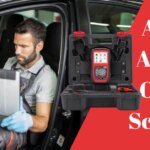
Do you know how many types of brush guards are on the market? If you’ve been on the road recently, especially in more rural regions, you’ve probably noticed a lot of automobiles with brush guards. They’re most common on trucks, SUVs, and law enforcement vehicles, and they give them a rugged, heavy-duty appearance.
Table of Contents
Brush Guards: What Are They Good For?
Brush guards are designed to protect the front end of a vehicle from damage in low-speed collisions, animal collisions, and off-road situations. They also add aesthetic appeal and make it easier to attach aftermarket lighting. Brush guards come in a variety of styles and levels of protection.
3 Main Types of Brush Guards
Brush guards come in various types and patterns, many of which have distinct names and different purposes, but the common denominator is harm protection.
1. Full Grille Guards
Full grille guards cover the whole front fascia of your car. In addition, they protect the center of the front bumper, grille, and headlights due to specially-shaped tubes that wrap around the outside perimeters of the headlamp assemblies.
Grille guards protect a truck’s front grille, bumper, headlamps, and body panels from damage caused by large animals, low-speed parking lot accidents, or slamming through the brush while off-roading. Police officers who have dealt with the damage from hitting deer, livestock, or other large wild animals believe that trucks with grille guards do better than those without.
Full grille protectors will be equally helpful for individuals who enjoy using their 4x4s off-road. While these bars will keep huge branches and debris out of your way in dense vegetation, they won’t block light from your headlamps because each one is curved and molded to fit your unique make and model.
2. Bull Bar
A bull bar is a portion of the center face and underside of the bumper that protects it against frontal and underside contact damage. With a tubular structure that is bigger in diameter and heavier-duty in construction, bull bars are designed to provide more robust protection than push bars or grille guard assemblies.
Bull bars, like grille guards, mount to the front of a vehicle and serve to deflect impact energy away from softer front body panels and onto the car’s structure. Bull bars mix function and design by giving a look of strength that is more subtle than a grille guard because they don’t extend as far upward. Bull bars usually have pre-drilled holes or tabs that make mounting off-road fog lights or driving lights simple.
3. Center Grille Guards (Push Bars)
A “push bar” is designed to line with the vehicle’s bumper ahead of you to provide a gentle push out without any harm. The bars that accomplish the pressing are generally vertical, rubber-coated, and softly bent to ensure uniform pressure is distributed. A push bar assembly bolts to the front framework of your car and may reach upward far enough to provide some protection for a piece of your center grille area as a standalone component. As a result, certain push bars are referred to as “center grille guards.”
Common Applications
As the name suggests, brush guards defend against damage from heavy brush, branches, and pebbles while off-roading or navigating narrow back roads. They also provide some protection from animal collisions. This is why ranchers, off-road enthusiasts, and those who routinely drive on rural roads and highways love them.
Many tow trucks and law enforcement vehicles have a brush guard or push bar installed to help prevent damage when pushing disabled automobiles or in other instances where a purposeful contact is required.
Brush guards are also frequently used to place light bars or spotlights on the vehicle’s front end; some are specifically intended.
Brush Guards Are They Universal?
Brush guards are typically not universal but instead built to fit a specific vehicle’s make and model — a mismatched build could interfere with sensors, headlights, or air intake. On the other hand, some brush guards are designed to fit various vehicles (generally smaller, simpler ones).
Brush guards that are created and made to exactly fit a specific vehicle are, of course, the most effective. Some may appear attractive and fit snugly across different model years. Still, proximity sensors, cameras, or intake vents may be blocked if they were meant for an older model and are installed on a contemporary model. It may even block the headlights, posing a safety risk.
Conclusion
A brush guard may benefit your car if you live in a rural location or small town with little pedestrian traffic. Or, if you do a lot of off-roading or driving on highways or back roads, where brush, flying pebbles, or animals are more common, a brush guard will come in handy.
Hi there! I’m Naomi O’Colman. I’ve got years of experience working at an auto repair shop here in Texas under my belt. On top of that, ever since I was a kid I’ve been passionate about the auto industry. Since I’ve joined the team at automotivegearz.com I’ve been enthusiastically sharing my passion and insights with my readers. I’m dedicated to delivering high quality content and helping you stay up to date with the latest automotive trends and products out there!







